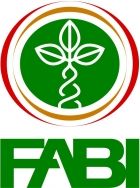News -
Genome sequence of Pantoea ananatis – a Eucalyptus pathogen
Pantoea ananatis is a Gram-negative bacterium belonging to the family Enterobacteriaceae which causes diseases on a broad range of agronomically important crops including maize, rice, onion and pineapple fruits. It has also been associated with human disease. In South Africa, P. ananatisposes a serious threat to the forestry industry, causing blight and dieback of commercial hybrids and clones of Eucalyptus grandis (Fig. 1). There are no effective means of control for this pathogen and infected material needs to be removed. Little is known about the mechanisms by whichPantoea ananatis causes disease on its plant hosts.
Figure 1: P. ananatis blight on Eucalyptus
In this paper, the whole genome of the Eucalyptus-pathogenic Pantoea ananatis strain LMG20103 was sequenced using the newly available 454 pyrosequencing technology. Subsequently, the genome was assembled and annotated (Fig. 2). This constitutes the first genome of a phytopathogenic bacterium to be sequenced in Africa. The genome consists of a single chromosome, 4.69 million nucleotides in size and with a G+C content of 53.69%. A total of 4,237 protein coding genes are encoded on the chromosome. This genome sequence will provide an extensive resource which can be used to analyse various aspects of P. ananatis biology, including how it causes disease. Further analysis has revealed the presence of 433 protein coding genes on the genome which have been experimentally shown to play a role in disease in other bacteria. Interestingly, two secretion systems, the Type II and III systems, are absent from P. ananatisLMG20103. These two systems play a major role in disease in both plant- and animal-pathogenic bacteria, raising questions on how P. ananatis can cause disease in the absence of these factors. However, three copies of the Type VI secretion, a recently described pathogenicity factor, are present. Interestingly, the putative effector proteins which are secreted via these secretion systems appear to be recently acquired through horizontal gene transfer. These effector proteins may have a role in P. ananatis infection of both plant and animal hosts. 
Figure 2: The genome sequence of P. ananatis LMG20103.
Another putative pathogenicity determinant identified from the genome, the exopolysaccharide ananatan, was experimentally demonstrated to play a role in disease on both onion seedlings and pineapple fruits. This was done through the production of a library of mutants which encompasses all the genes on the P. ananatis genome. This library can be further used to elucidate the functions of other putative pathogenicity factors on the genome. The information gained from the genome and from the mutant library will allow a better understanding of how P. ananatis causes disease on its plant hosts and can be utilised to develop and implement directed and effective control measures against this important plant pathogen.
Related links
Topics
- Forest Management
Categories
- p. ananatis blight on eucalyptus
- the genome sequence of p. ananatis lmg20103.
- genome sequence of pantoea ananatis – a eucalyptus pathogen
- enterobacteriaceae
